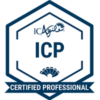WHAT IS BUSINESS AGILITY?
Business Agility is the ability of an organisation to adapt rapidly, innovate efficiently, and respond promptly to customer needs and to emerging opportunities.
What are the benefits of Business Agility?
Swift market adaptation
Enhanced innovation speed
Improved operational flexibility
Resilient organisational structure
How did Business Agility begin?
Business Agility evolved as a response to the fast-paced, unpredictable nature of modern markets. With roots in agile methodologies initially developed for software development in the late 1990s and early 2000s, Business Agility has since expanded to encompass the entire organisation, ensuring responsiveness across all operations.
What distinguishes Business Agility from traditional business models?
Business Agility emphasises rapid adaptation, cross-functional collaboration, and customer-focused innovation, whereas traditional models might be more rigid and hierarchical.
Is Business Agility only relevant for technology companies?
No, while it originated in tech, Business Agility principles can be applied to any industry facing rapid change and seeking operational flexibility.
What is the relationship between Agile and Business Agility?
While Agile primarily began as a methodology for software development, Business Agility applies similar principles of adaptability and continuous improvement to the wider organisation.
How does Business Agility complement Lean?
Both focus on delivering value efficiently. While Lean targets process waste reduction, Business Agility aims for adaptability and swift response to change.
Does every organisation need Business Agility?
While not every organisation may require full-scale Business Agility, most can benefit from its principles, especially in rapidly evolving market.
What are key stages in a Business Agility journey within an organisation?
The key stages are:
- Preparation: Recognising the need for more flexibility and responsiveness.
Ensuring business strategy objectives are aligned with Agile principles and are customer-centric. - Training: Equipping teams with knowledge on Agile principles and methodologies relevant to business operations.
- Implementation: Integrating Agile practices across departments and teams. Expanding Agile practices to promote an enterprise-wide Agile culture.
- Review & Adaptation: Regular assessments and feedback-driven adjustments.Consistently refining processes and practices in response to market demands and performance metrics.
What courses are recommended to understand Business Agility better?
Courses such as Business Agility (IC Agile), Agile Fundamentals an Leading SAFe offer comprehensive insights into the concept.
Business Agility
Foundations
Discover the foundations of Business Agility. Equivalent to 2 days of classroom training.
Agile
Fundamentals
ICAgile accredited Agile Fundamentals. Equivalent to 2 days of classroom training.







